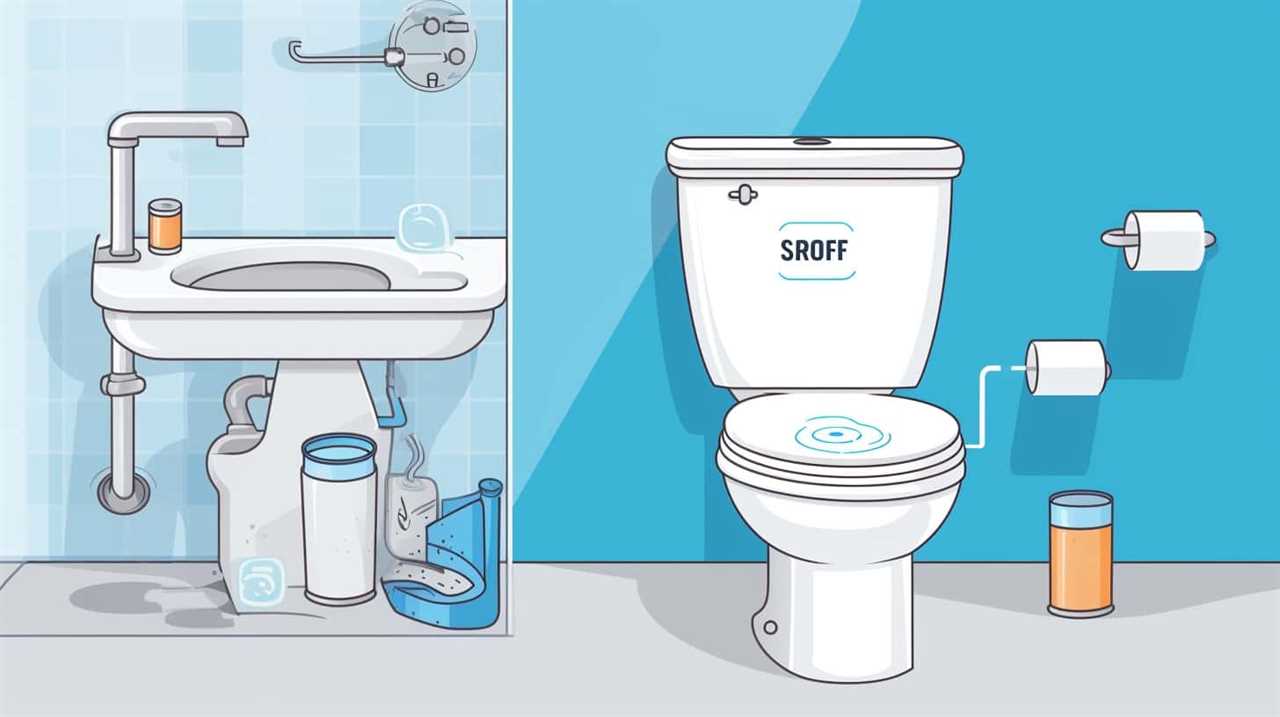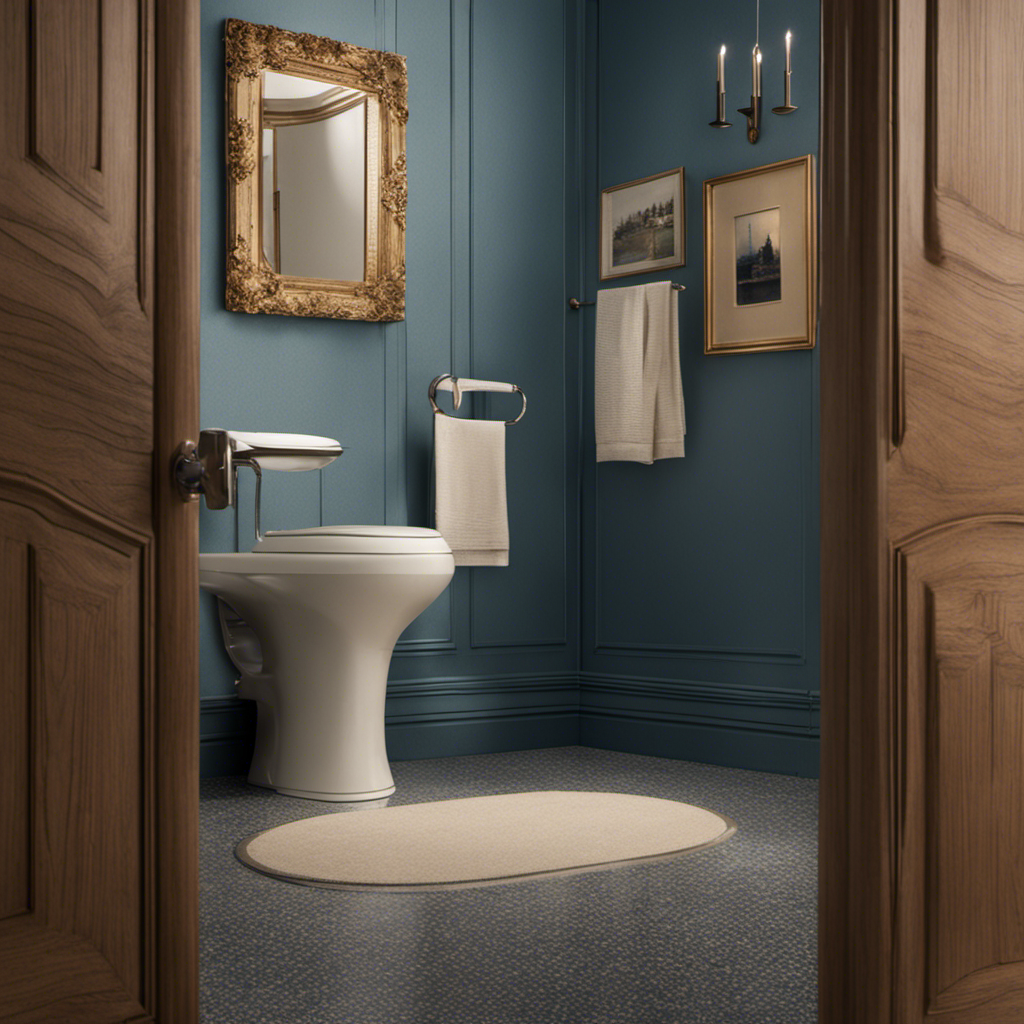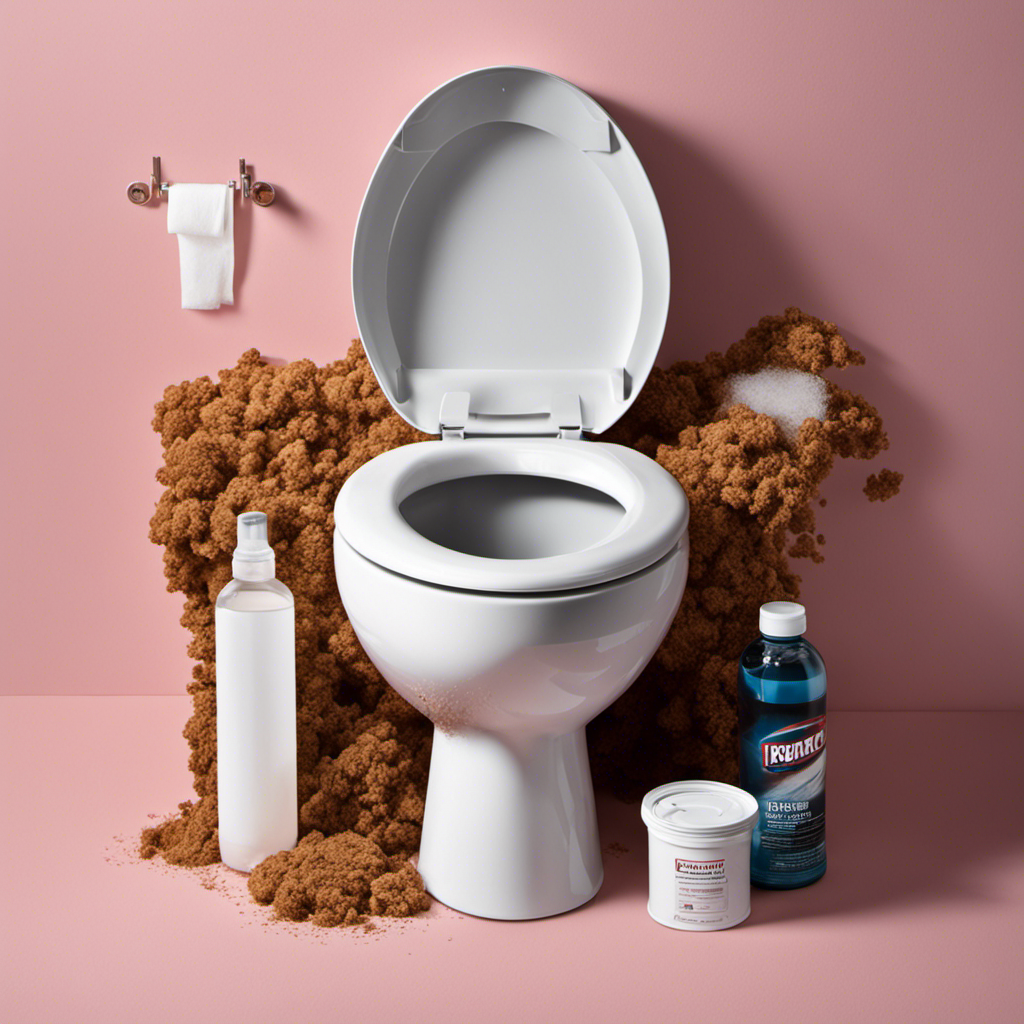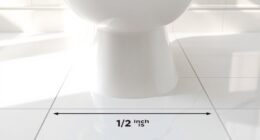Welcome to our guide exploring the complex world of components inside a toilet tank.
Just like a well-oiled machine, these components work together seamlessly to ensure a flawless flush.
From the fill valve to the flush lever, each part plays a vital role in the smooth operation of your toilet.
Get ready to dive into this technical exploration, where we’ll unravel the mysteries behind the flapper, flush valve, float ball, fill valve, and flush lever.

Prepare to master the art of toilet maintenance like a pro.
Key Takeaways
- The fill valve regulates water flow into the tank and ensures the correct water level for efficient flushing.
- Regular maintenance and adjustments of the fill valve, flush valve, flapper, float ball, and flush lever are necessary for optimal performance.
- The flush valve releases water into the bowl for flushing and should be inspected for leaks, cleaned of debris, and the chain adjusted for proper sealing.
- The float ball maintains the water level in the tank and problems can be addressed by adjusting its height using an adjustment screw or clip, and testing the water level to achieve the desired level.
Fill Valve
In our toilet tank, the fill valve is responsible for regulating the flow of water into the tank. It plays a crucial role in maintaining the correct water level, ensuring proper flushing and efficient operation of the toilet.
The fill valve has a mechanism that controls the inflow of water, allowing it to fill the tank to the desired level. To adjust the height of the fill valve, you can usually find a screw or slider mechanism that allows you to increase or decrease the water level.
Troubleshooting common issues with the fill valve includes checking for leaks, ensuring the valve is properly connected, and cleaning any debris that may be obstructing its function.

Regular maintenance and periodic adjustments of the fill valve height will help optimize the performance of your toilet.
Flush Valve
The flush valve, located in the toilet tank, is responsible for releasing the water into the bowl for flushing. It’s an essential component that ensures proper functioning of the toilet.
To maintain your toilet tank and troubleshoot flush valve issues effectively, consider the following:
- Inspect for leaks: Regularly check the flush valve for any signs of leaks, such as water pooling around the base of the toilet or continuous running water.
- Clean and remove debris: Sediment and debris can accumulate over time, affecting the flush valve’s performance. Clean the valve and remove any obstructions to ensure smooth operation.
- Adjust the chain: A loose or tangled chain can prevent the flush valve from closing properly, leading to water wastage. Adjust the chain length to ensure a tight seal and efficient flushing.
Flapper
Moving on to the flapper, we need to address its crucial role in the proper functioning of the toilet tank. The flapper is a rubber or plastic valve that controls the flow of water from the tank to the bowl during flushing. It is attached to the flush valve and lifts when the handle is pressed, allowing water to enter the bowl. When the flush is complete, the flapper falls back into place, sealing the tank and stopping the water flow.

To ensure the flapper’s optimal performance, regular maintenance is necessary. This includes checking for any signs of wear or damage and cleaning any debris or mineral buildup that may affect its functionality. Troubleshooting common flapper issues involves inspecting the chain length, adjusting the flapper alignment, and replacing any worn-out parts.
Below is a table summarizing the key points for toilet flapper maintenance and troubleshooting common flapper issues:
| Maintenance | Troubleshooting |
|---|---|
| Check for wear or damage | Inspect chain length |
| Clean debris or mineral buildup | Adjust flapper alignment |
| Replace worn-out parts | Resolve leaks or incomplete flushes |
Float Ball
Now let’s shift our attention to the float ball, as it plays an important role in maintaining the water level inside the toilet tank.
The float ball is a hollow, buoyant object that floats on the water surface and is attached to the fill valve. Here are some common float ball problems you may encounter:

- The float ball isn’t rising or falling properly, causing an incorrect water level in the tank.
- The float ball gets stuck, preventing the fill valve from shutting off and causing continuous water flow.
- The float ball is damaged or leaking, leading to water leakage and inefficient flushing.
To adjust the float ball height, follow these steps:
- Locate the adjustment screw or clip on the fill valve.
- Loosen or tighten the screw or clip to raise or lower the float ball.
- Test the water level by flushing and adjusting until the desired level is achieved.
Flush Lever
Let’s begin by examining the function and importance of the flush lever within the toilet tank. The flush lever, also known as the toilet handle, is a crucial component that initiates the flushing process. When pressed, it activates the flapper or flush valve, allowing water to rush into the toilet bowl and remove waste.
Toilet handle installation is a relatively simple task that requires aligning the lever arm with the flush valve and securing it in place. However, troubleshooting flush lever issues may be necessary if it becomes loose, sticks, or fails to flush properly. In such cases, it’s important to check for any obstructions or debris that may be interfering with the lever’s movement. Additionally, adjusting the chain length connecting the lever to the flapper can help ensure smooth operation.
Frequently Asked Questions
How Do I Know if My Toilet Fill Valve Needs to Be Replaced?
If your toilet fill valve is faulty, signs like inconsistent water levels, constant running, or slow filling may indicate replacement is needed. Consult a professional plumber for toilet fill valve replacement.
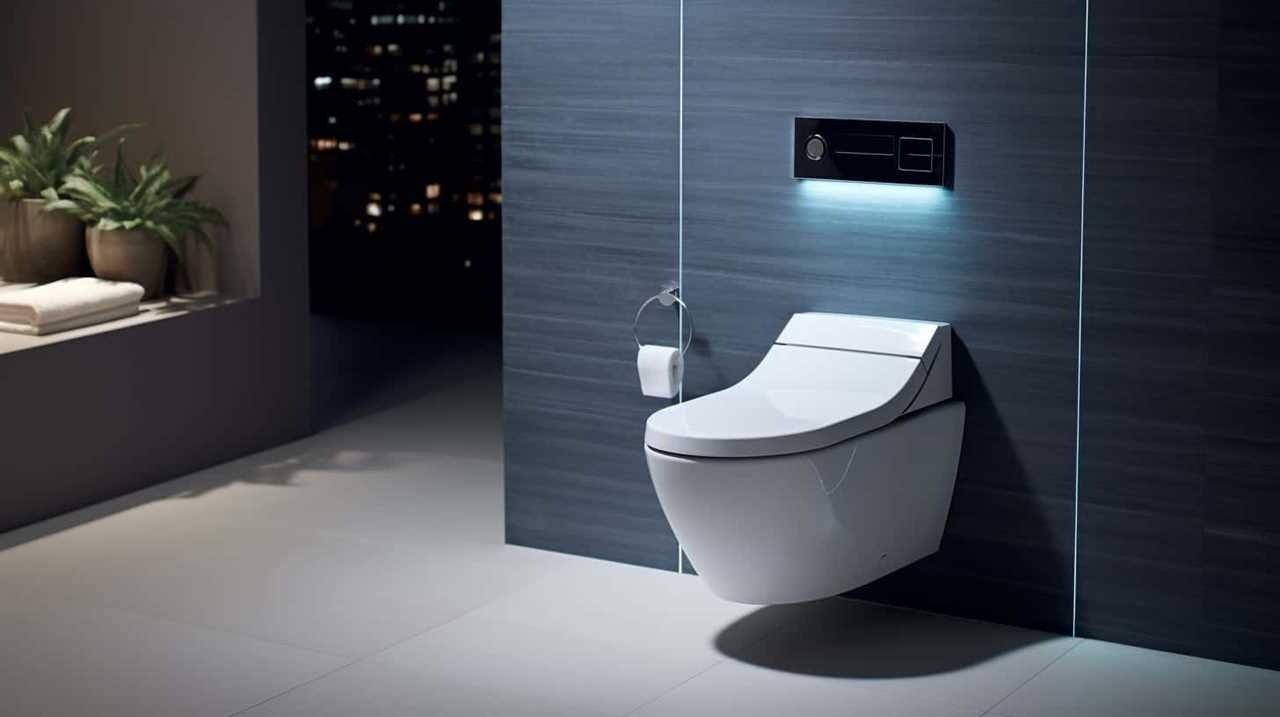
Can I Replace the Flush Valve on My Own or Do I Need to Hire a Plumber?
Replacing the flush valve on our own is feasible. We can save money by DIY-ing it, but it requires technical knowledge. Hiring a plumber might be necessary if we lack expertise or encounter complications.
What Are the Most Common Problems With Flappers and How Can I Fix Them?
Toilet flapper repair is a common issue in tanks. Troubleshooting flapper problems often involves checking for worn or misaligned parts, adjusting the chain length, or cleaning mineral buildup. We can handle these repairs ourselves.
How Do I Adjust the Float Ball to Ensure Proper Water Level in the Toilet Tank?
To adjust the float ball for proper water level in the toilet tank, we first locate the adjustment screw. Turning it clockwise raises the water level, while turning it counterclockwise lowers it. Troubleshooting water level issues is crucial for optimal toilet performance.
Is It Possible to Replace the Flush Lever With a Different Style or Design for Aesthetic Purposes?
Yes, it is possible to replace the flush lever with a different style or design for aesthetic purposes. Different flush lever designs offer various pros and cons, and they can be found to match your bathroom decor.

Conclusion
After examining the various toilet parts in the tank, it becomes evident that each component plays a crucial role in the overall functioning.
From the fill valve that controls water supply to the flush valve that releases it, the flapper that seals the tank, the float ball that adjusts water level, and the flush lever that initiates the flushing process, every part contributes to a smooth and efficient operation.
Like a well-orchestrated symphony, these components harmoniously work together, ensuring a flawless flush every time.

